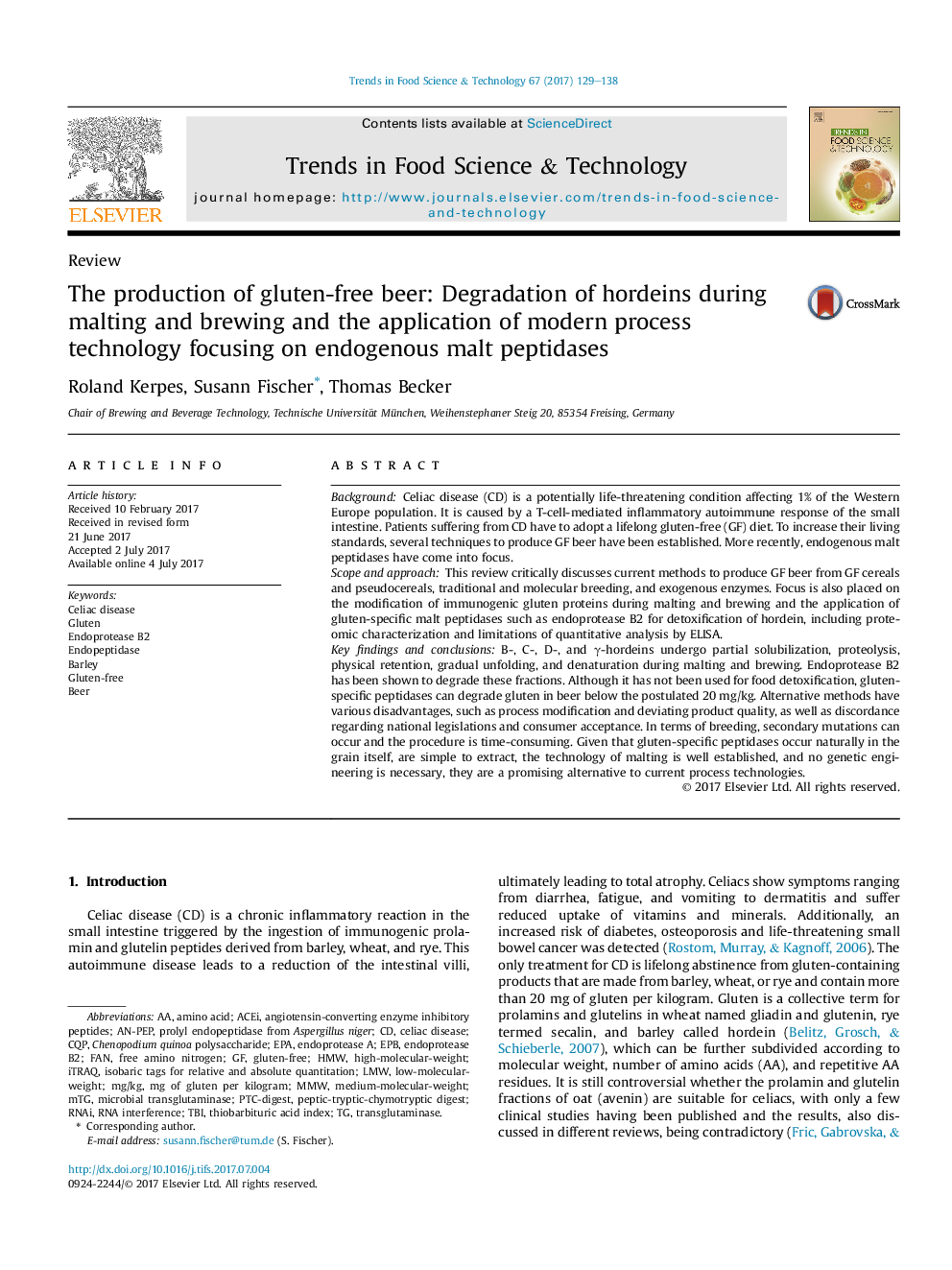| Article ID | Journal | Published Year | Pages | File Type |
|---|---|---|---|---|
| 5523600 | Trends in Food Science & Technology | 2017 | 10 Pages |
â¢Qualitative and quantitative analysis of hordeins during malting and brewing.â¢Critical discussion of the technologies to produce gluten-free beer.â¢Characterization of endogenous gluten degrading malt peptidases focusing on EPB.â¢Discussion of the limitations to quantify hordein in beer using R5-ELISA.
BackgroundCeliac disease (CD) is a potentially life-threatening condition affecting 1% of the Western Europe population. It is caused by a T-cell-mediated inflammatory autoimmune response of the small intestine. Patients suffering from CD have to adopt a lifelong gluten-free (GF) diet. To increase their living standards, several techniques to produce GF beer have been established. More recently, endogenous malt peptidases have come into focus.Scope and approachThis review critically discusses current methods to produce GF beer from GF cereals and pseudocereals, traditional and molecular breeding, and exogenous enzymes. Focus is also placed on the modification of immunogenic gluten proteins during malting and brewing and the application of gluten-specific malt peptidases such as endoprotease B2 for detoxification of hordein, including proteomic characterization and limitations of quantitative analysis by ELISA.Key findings and conclusionsB-, C-, D-, and γ-hordeins undergo partial solubilization, proteolysis, physical retention, gradual unfolding, and denaturation during malting and brewing. Endoprotease B2 has been shown to degrade these fractions. Although it has not been used for food detoxification, gluten-specific peptidases can degrade gluten in beer below the postulated 20 mg/kg. Alternative methods have various disadvantages, such as process modification and deviating product quality, as well as discordance regarding national legislations and consumer acceptance. In terms of breeding, secondary mutations can occur and the procedure is time-consuming. Given that gluten-specific peptidases occur naturally in the grain itself, are simple to extract, the technology of malting is well established, and no genetic engineering is necessary, they are a promising alternative to current process technologies.
